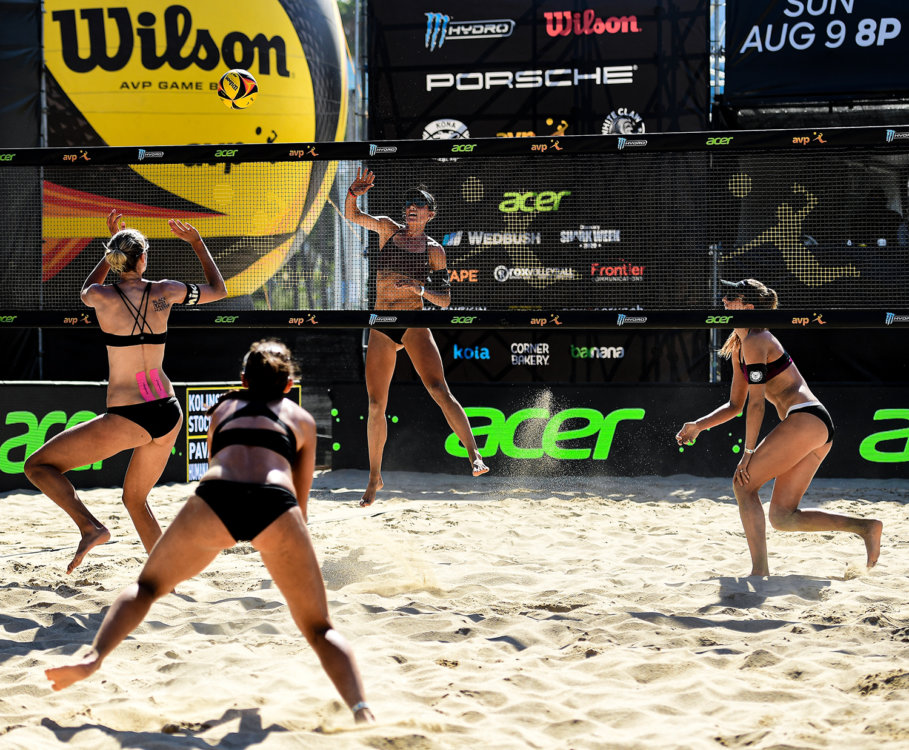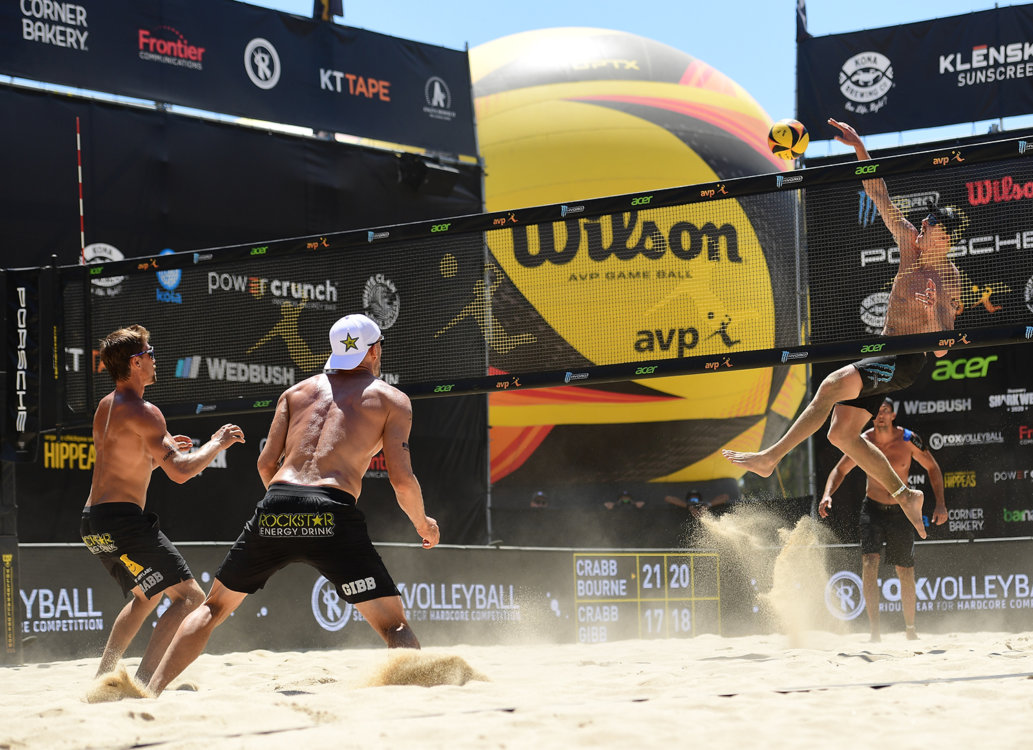In breaking down all of the individual volleyball skills – serving, passing, setting, hitting, blocking, etc. – we’re now to one of the final movements: pulling.
If you’re unfamiliar with beach volleyball, you may not know what pulling is. The term is further muddied because a handful of people refer to it as peeling. Henceforth, we’ll call it pulling because A. I like that better, and B. I haven’t heard peeling since I lived in Florida seven years ago.

Pulling is when a blocker leaves the net, essentially pulling themselves from blocking to play defense in the backcourt. The movement is exclusive to beach volleyball, as indoor players would never leave an open net. A blocker pulls when the set is “bad,” aka off the net, too far wide, behind the player, etc. There are other reasons to pull, but we’ll assume the set is bad for the sake of this article.
A player pulls because, with a bad set, your opponent’s options are limited. With an optimal set, a hitter can bang hard angle, poke line, or slice a little cutty to your sideline. Blockers need to stay up to take sections of the court away. But with a set off the net or too far wide, their options are more predictable and restricted. Attackers are likely unable to hit a ball straight down (and if they do, good for them), so there’s no need to stay at the net and take that option.

If an attacker gets a bad set, they’re going to shoot the ball or hit a passable hard-driven hit. And if a blocker stays, they’re leaving the entire court for their defender to cover. But, if they pull off the net and get into what resembles serve receive position, they are available to cover their half of the court.
Pulling footwork is very intuitive and resembles other volleyball footwork, especially indoor defensive movements. If you’re blocking on the left side of the court and decide to pull, it looks like this:
- Right leg steps back, but your eyes stay forward on your opponent (we’ll talk about why in a minute). At this point, your body is open to the court, at about a 45-degree angle to the net.
- Turn your body to almost entirely face the end line and step your left leg around while still keeping your eyes forward. Important: this is not a backpedal, which is slow and uncoordinated (though we all accidentally do it from time to time). This footwork is a short run back to your pulling spot.
- Flip your body around and bring your feet parallel and facing forward in a mini hop-step. While doing this, bring your hands up around chest level, so you’re ready to overhand dig or create a platform to pass.
- Eyes on your opponent and dig that ball!
Returning to the eye part – it’s vital to stay locked in on your attacking opponent while pulling. Defense is all about gathering information, and it’s only collected through paying attention to your opponents’ movements. Are they so out of position that they’ll be free-balling? Are their knuckles out ready to pokey? Have they turned to the cut and are obviously going for it? All of these bits of information make your job on defense so much easier. You’ve already done the hard work of getting them out of system, so you don’t want to make their off-the-net attack better than it should be by not paying attention to the cues they’re giving away.
Once your opponent attacks, you have to decide how to defend. If they hit it hard-driven at your head, it’s time to use those hands to dig. If they’re poking short, you better be ready to dive for that dig. And if they’re going high above your head for the line jumbo – turn and haul.
As a pulling defender, you’re just as responsible for digging the ball as your partner. You split the court in two, understanding that each person is responsible for their half. Pulling is usually a good thing, as it means your opponents are in a bind. But make sure you don’t pull too soon, giving them an open net with a good set. And if you’re playing Casey Patterson, well, he’ll tell you “don’t pull on me” EVER.
As per usual, it’s easier seen than written, so I recommend binge-watching a few Amazon Prime matches to see and break down the movements. And get out there and practice!
